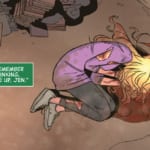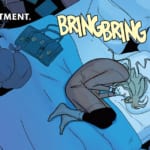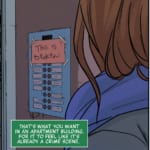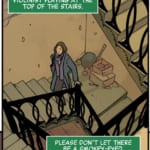It wasn’t always this way, but with time I learned to appreciate slow-build stories. With so many writers feeling pressured to deliver action-packed adventures or shocking twists, I’m happy there are creators who allow their narratives to breathe. We get to know the characters and their conflicts, so the big moments feel earned when they finally arrive. There’s nothing wrong with a good punch, of course, but certain themes require a gentler approach.
Yet even slow-build stories must move forward somehow, otherwise, they will hurt the same narrative they’re so carefully composing. Writer Mariko Tamaki seems to be aware of that, because Hulk#4, the fourth part of the Deconstructed arc, takes important steps and leaves us with an interesting cliffhanger.
This issue begins with Jennifer Walters musing on how sometimes you know you’re gonna have a bad day. And look, there’s a clever Civil War reference there too:

We’re then introduced to the night Maise Brewn was attacked. Last month we learned the origins of her trauma, but this time we actually see the events. Most of the violence is implied rather than shown, but the book is still very effective in conveying Maise’s suffering.
Jen’s trauma and PTSD are relatable, but there’s something about Maise’s story that is especially touching. Perhaps because Jennifer is a superhero, but Maise was just a regular citizen living her regular life. Despite her Inhuman nature, Maise is like me or you and what happened to her could happen to anyone.
As the panels show Maise’s story, Jen’s internal monologue describes her own experience with the worst day of her life, strengthening the parallels between the two. Amidst cases and giant clients (not a metaphor), Jen decides to pay Maise a visit because they still can’t reach her.
On a side note, baking bagels with his boyfriend is a better way to show that Bradley is gay than having the character call himself “super gay” for no reason, as we saw in Hulk #2. This made sense for the story and didn’t feel pandering.
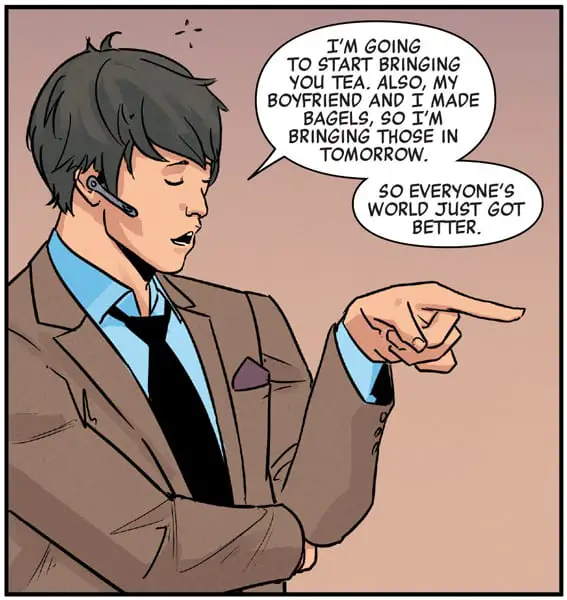
Jennifer arrives at Maise’s building and we get delightful bits of snarky humor. Given the nature of the book’s themes and content, those moments are important to prevent it from becoming too gloomy. Also, they’re funny:
We also get an ominous but very meta sentence from one of the residents:
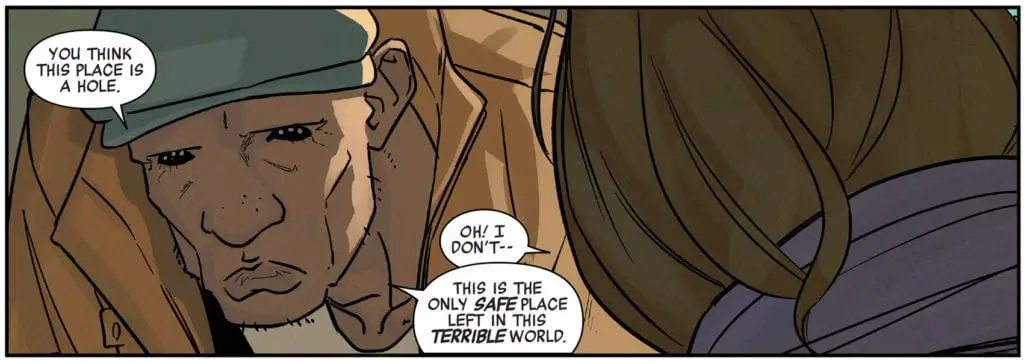
I say “meta” because I think this sentence is very meaningful for Jen’s and especially Maise’s state. They’re emotionally in bad places, but bad places they somehow perceive to be safe in a terrible world. In a way, PTSD is only your mind trying to protect you from further trauma. Except you can’t stay in the metaphorical crappy building forever. But I digress.
Meanwhile, the police find the corpses of the two officers killed by the shadowy thing protecting Maise. We don’t see them, but judging by the reactions they don’t look good.
Maise receives Jen in her apartment, but she thinks the lawyer failed to protect her as promised. Jen tries to explain she knows a version of what Maise is going through, but the conversation takes an unpleasant turn when she tells her client that Mr. Tick has sold the building months ago and the buyers are going to redevelop. Then Maise goes from scared to scary really fast.
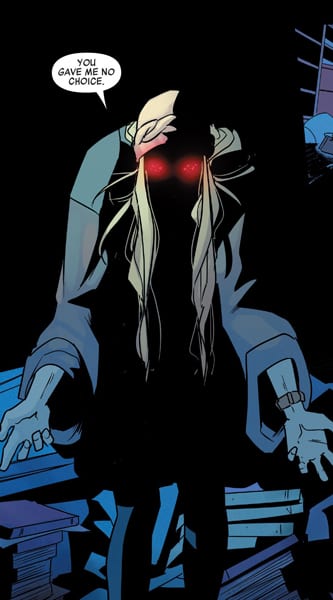
It is revealed she was the shadowy murderous creature all along. Better yet, the creature was a personification of her fears, perhaps brought to life by whatever Inhuman abilities she possesses. Maise unleashes the monster, leaving Jen in a terrible situation.
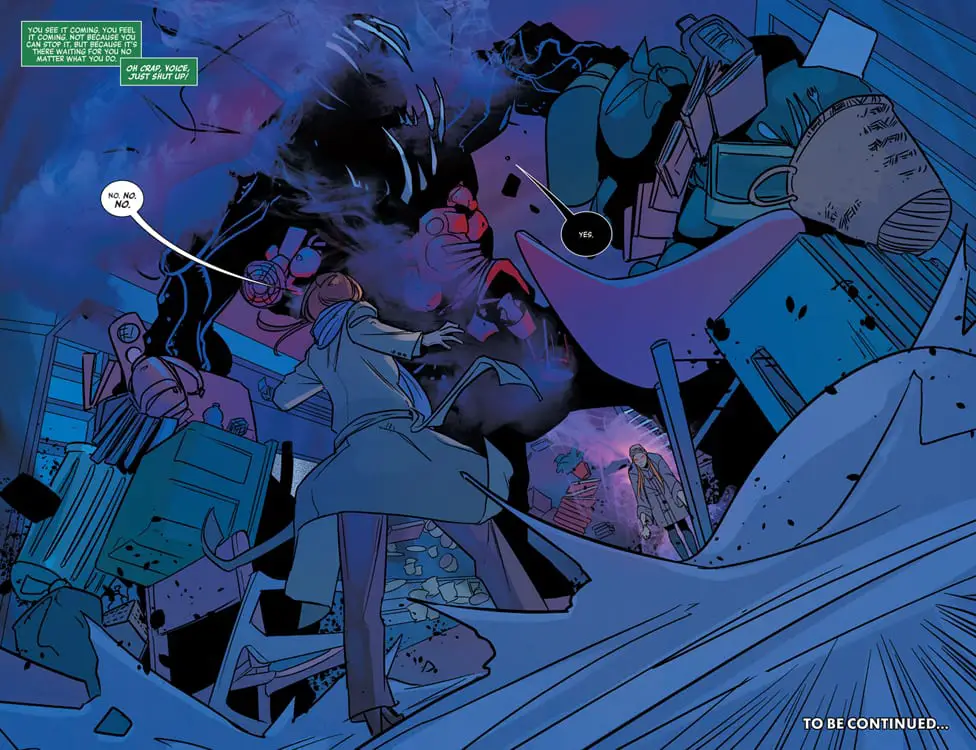
Maise is a great antagonist for this story not only because her pain mirrors Jen’s but also because I can’t bring myself to dislike her. Sure, murdering people who trigger you is not a good way to handle your PTSD, but the story humanizes her, showing you the tragedy of her story. I actually feel sorry for her.
The art was beautiful as always, but this time it was also very effective in dramatic moments, like the night Maise was attacked or her transformation. There’s a lot of attention to detail, as we can see in how Jen’s apartment is clearly tailored for the She-Hulk and not the human Jennifer Walters.
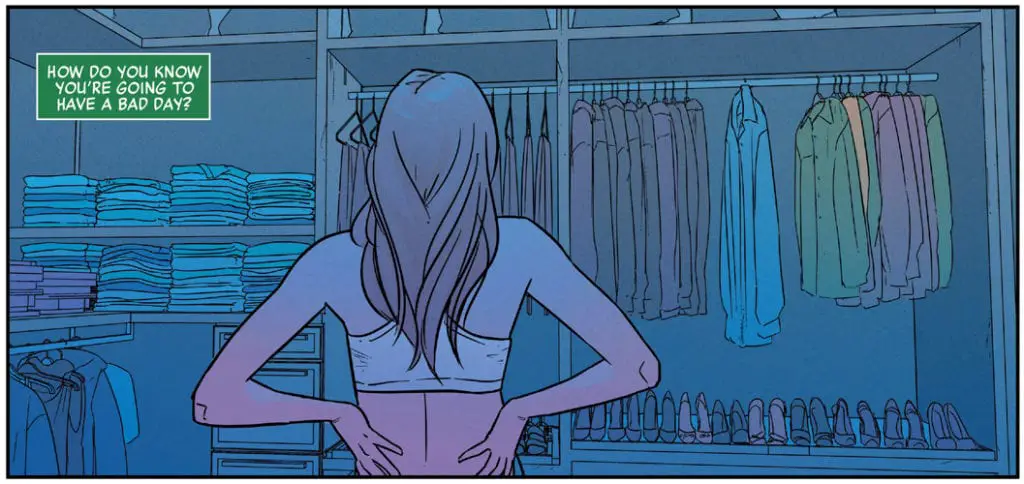
My favorite thing about the cliffhanger is how it works for this particular story. The She-Hulk could probably handle this situation easily, but here there’s only Jennifer Walters. What will she do? Will she figure a way to face Maise’s monster as Jen, not the Hulk? Will she get help? Will she try to hulk out? Will she be able to do it? There are many exciting possibilities for the story to explore and I can’t wait to see where this will lead Jen.
All Images Courtesy Of Marvel Comics.
Credits for Hulk (2016) #4
Writer: Mariko Tamaki
Artist: Nico Leon
Colors: Matt Milla
Letters: VC’s Cory Petit
Designer: Manny Mederos


